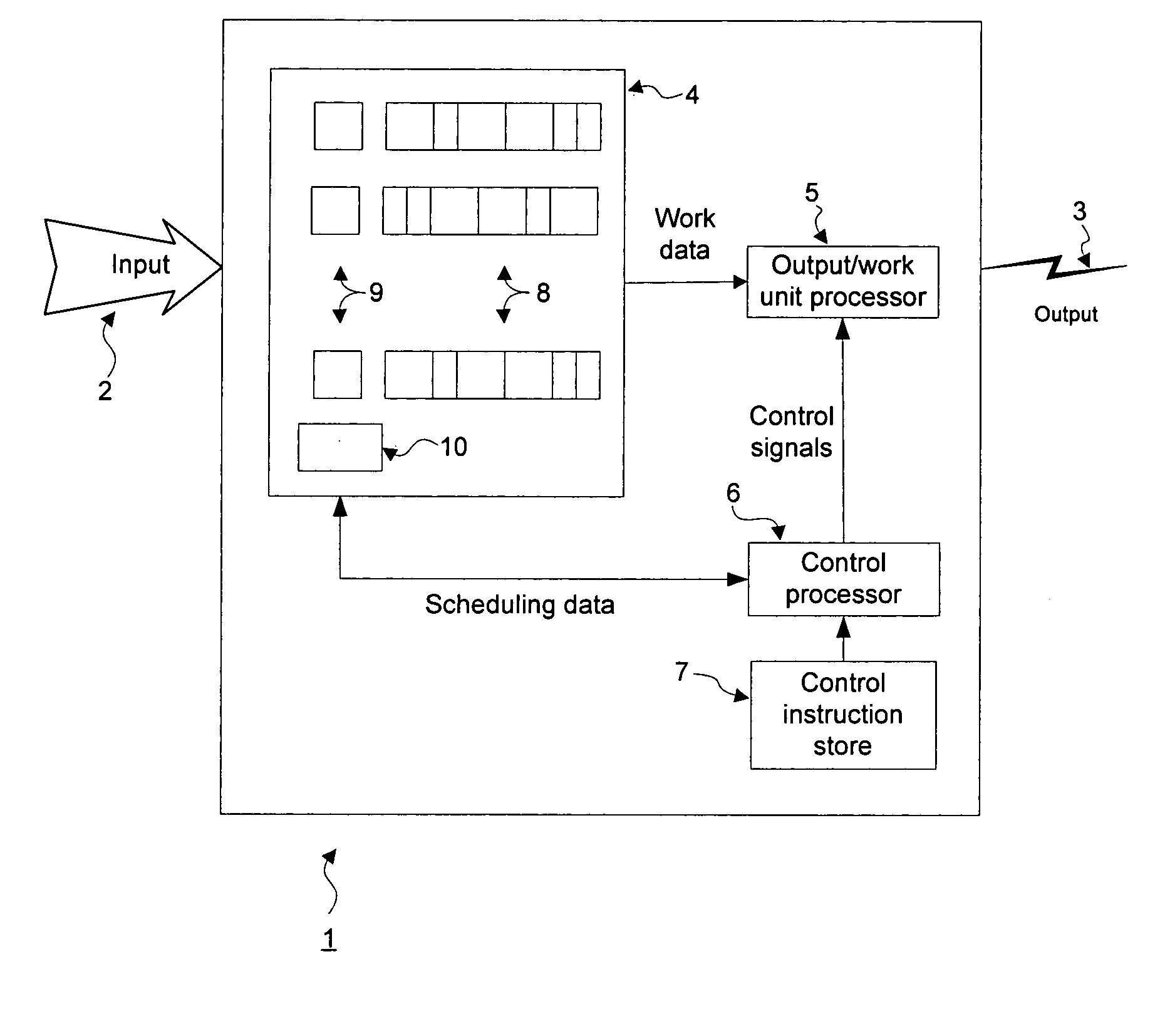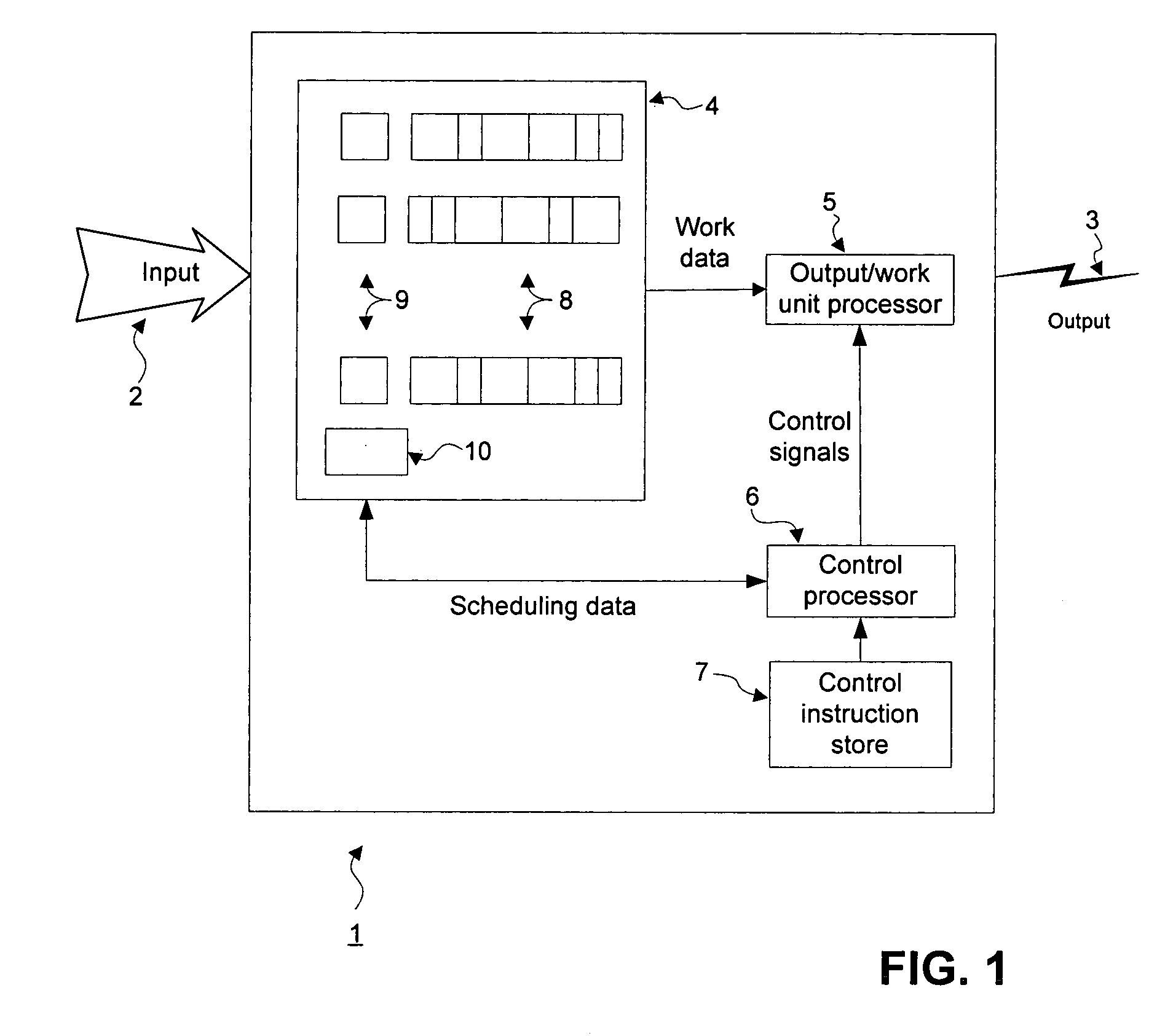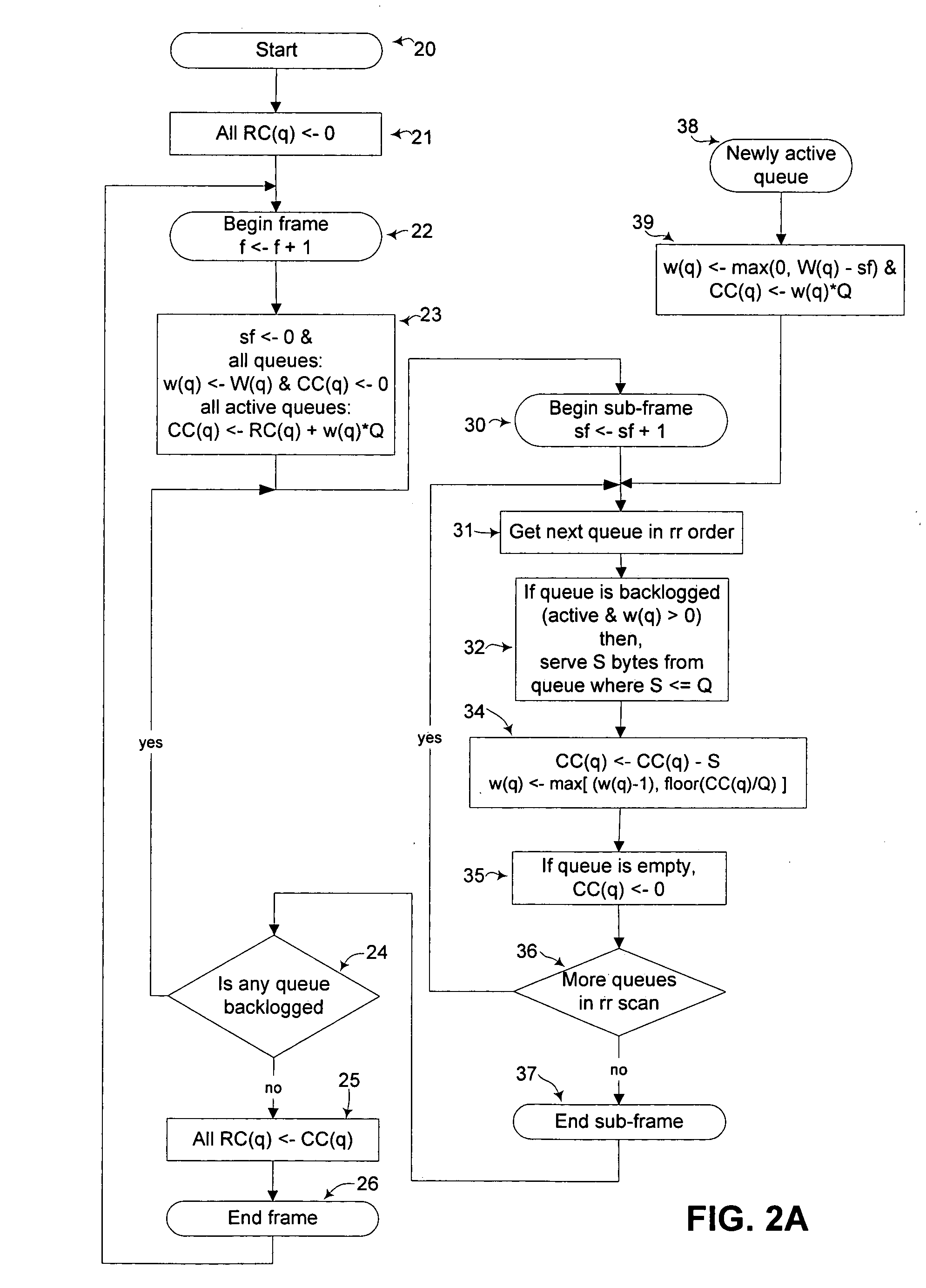Systems and methods for smooth and efficient round-robin scheduling
- Summary
- Abstract
- Description
- Claims
- Application Information
AI Technical Summary
Benefits of technology
Problems solved by technology
Method used
Image
Examples
first embodiment
[0029] Generally, a first preferred embodiment uses a current credit counter, CC(q), and a service counter, w(q), to track service assigned and used by queue q in each frame. At the start of a frame, w(q) for queue q is initialized to that queue's predetermined service W(q), and during the frame's sub-frames is decremented when queue q is granted service quantum Q. CC(q) is used to track the service assigned but not actually used. Further, w(q) is updated in dependence on CC(q), being increased if CC(q) becomes sufficiently large, in order that each queue q is able to actually use as much of its predetermined service as possible.
[0030]FIG. 2A illustrates this first embodiment. The scheduler method starts at 20 and performs necessary initialization 21, including setting all RC(q) (residual credits) and f (frame counter) to zero and obtaining scheduler control parameters, including at least N (the number of queues), W(q)'s (assigned service per frame per queue), Q (service quantum), ...
PUM
 Login to View More
Login to View More Abstract
Description
Claims
Application Information
 Login to View More
Login to View More - R&D
- Intellectual Property
- Life Sciences
- Materials
- Tech Scout
- Unparalleled Data Quality
- Higher Quality Content
- 60% Fewer Hallucinations
Browse by: Latest US Patents, China's latest patents, Technical Efficacy Thesaurus, Application Domain, Technology Topic, Popular Technical Reports.
© 2025 PatSnap. All rights reserved.Legal|Privacy policy|Modern Slavery Act Transparency Statement|Sitemap|About US| Contact US: help@patsnap.com



